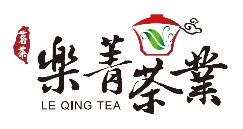
Our tea garden is located at Gaoshan Mountain, Renai Township, Nantou, Taiwan, at an altitude of 1,500 meters. The altitude of the tea-picking tea area is 1500-2600 meters. The higher the altitude, the higher the characteristics of cold tea, and the tea quality has unique advantages.

Experienced tea picking team
The working scope of the tea picking team includes the Hehuan Mountain in Ren’ai Township, Nantou, such as: Datong Mountain, Dongyan Mountain, Tunxi, Xidi, Gaofeng, Lushan, Suiyuan, Qilai Mountain, Cuifeng Tea District, and the sarcophagus of Alishan in Chiayi. Taihe, Yushu Lake, etc., and other high-altitude tea areas, high efficiency and rich experience.

Professional manufacturing of tea
Hiring a senior tea master, the work tacit is very good, overcoming the complicated tea manufacturing process, squeezing, unblocking, smashing and drying. Different teas have different working processes, and our tea masters are experienced.
LeQing Chi-en Tea Factory
At an altitude of 1,500 meters, it is the peak mountain of Renai Township, Nantou County. Our tea gardens grow tea in an organic way. Obtained organic tea certification, Taiwan agricultural product production traceability certificate, from tea planting, organic agriculture management, pesticide residue detection, laying the foundation for high-quality tea. The professional tea picking team is affirmed by the alpine tea gardens and serves the index Wuling Farm Tea Garden.
Professional tea factory, with excellent tea making team, fine tea technology, tea master team, strong lineup, strict control of the process, skilled and tacit division, production quality assurance and reasonable price of good tea to consumers.
Procedures
Strict manufacturing process management, quality, health, and service are our business philosophy. The company’s food safety policy is operational hygiene, product safety, customer peace of mind, production of high-quality Taiwanese tea, the most simple and authentic taste of mountain tea.
Tea harvesting
Tea harvesting has the opportunity to grasp the advantages of the time and place, and is collected by the tea picking team and transported back to the tea factory from the tea garden.
Withering outdoors
After the fresh leaves are harvested, they must be spread out immediately, which is called outdoor withering or sun nourishing, so that the tea crystals can be evenly exposed to sunlight.
Tea greens stirring
The tea cyanine is turned by both hands, causing friction between the leaves and the leaves, and the contact with the air to oxidize, and the leaf surface moisture continues to evaporate.
Indoor wither
The column is dispersed and allowed to stand in the air to produce oxidation, and the leaf surface moisture continues to evaporate. The professional tea maker controls the degree of fermentation according to the temperature and humidity at that time.
Stirring
After the agitation of the tea cyanine, after a period of standing fermentation, it must be stirred again with a wave-green machine to make the tea reach the desired degree of fermentation.
Fermentation
After the agitation is completed, the tea leaves should be allowed to stand for a period of time, so that the ingredients of the tea can be brought into contact with the air, thereby oxidizing, and when the aroma of the tea leaves reaches the apex, the next step can be carried out.
Fried
Using high temperature to fry or steam the tea leaves, this process is called ``killing the green`` and is called ``fried green``. The green odor of the original tea leaves will disappear, the tea stalks and veins will become soft and sticky, and the aroma of tea will gradually form.
Rub
After the tea has stopped fermenting, it becomes soft but still flake-shaped. It must be rubbed to make the tea into the shape we want.
